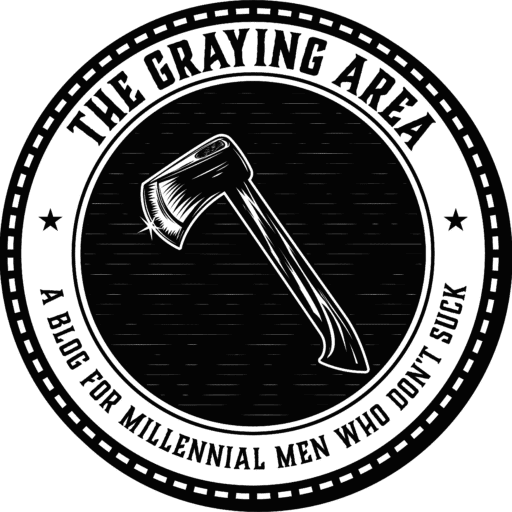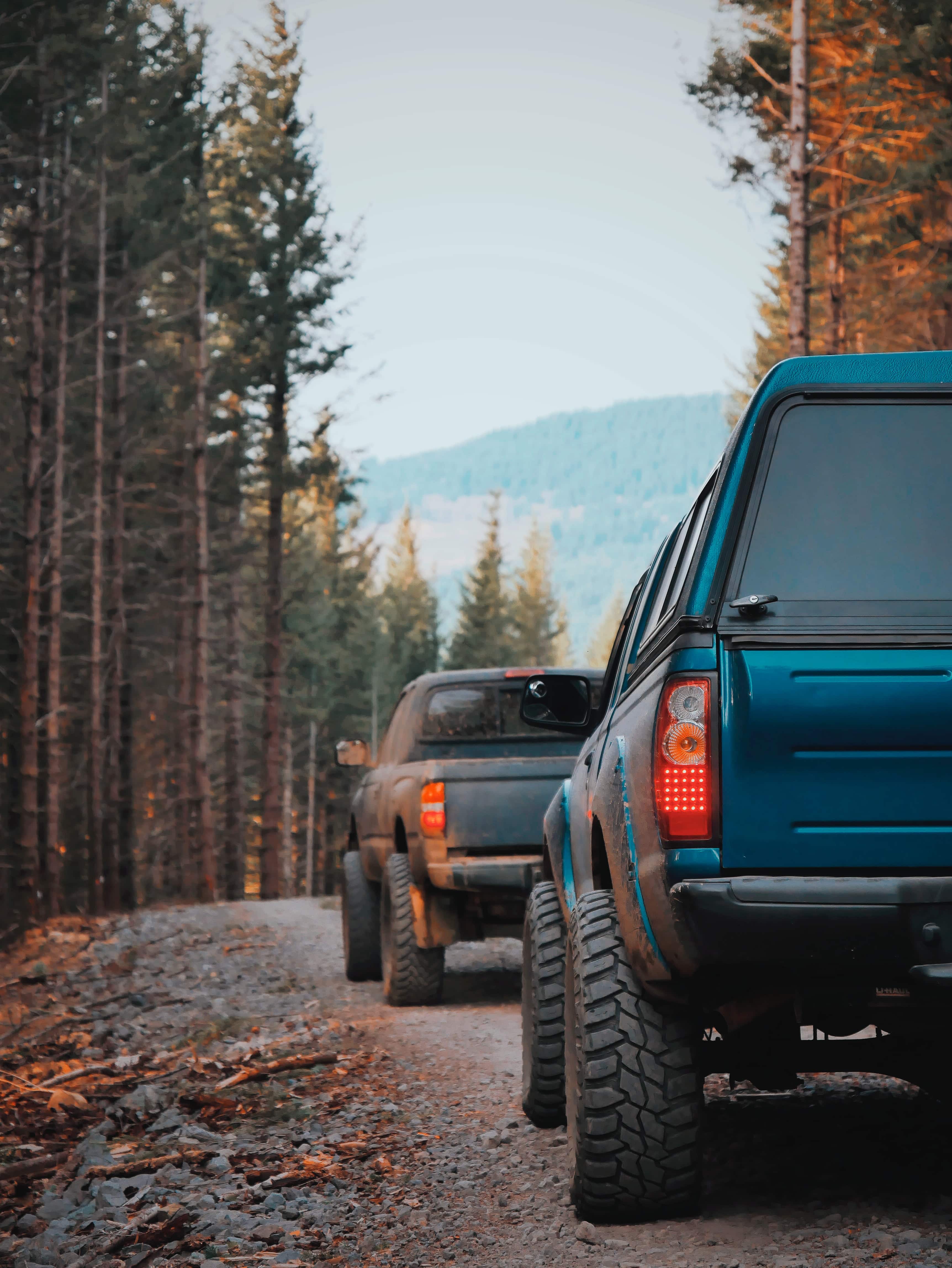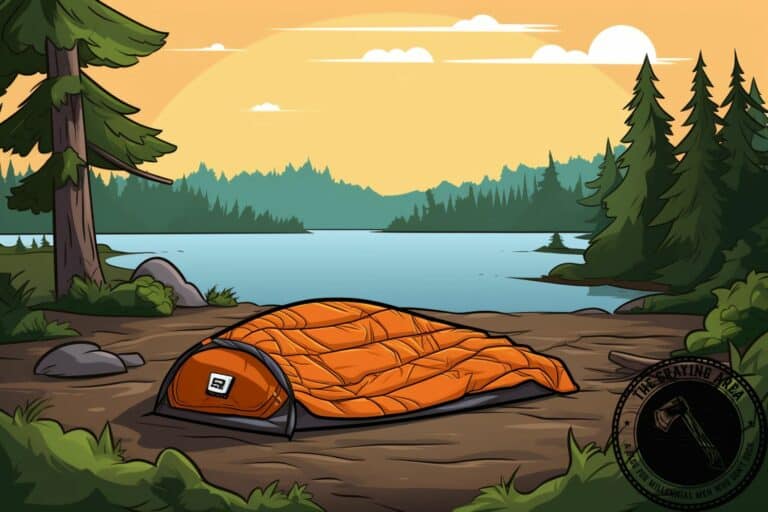Overlanding for Beginners: The Best Guide for Budding Off-Roaders
While there might be a light at the end of the pandemic tunnel, plenty of guys are looking for new hobbies and ways to get outside. Instead of gathering at ballparks, clubs, and bars, many are turning to the sport of overlanding, hoping to leave their Monday-through-Friday nonsense in the dust. This guide on overlanding for beginners will explain it all.
If you’re looking for a new way to get out there and see nature, hang out with some incredible people, and challenge yourself (and your vehicle) for a weekend, overlanding might be just the ticket. Keep reading to learn more about overlanding, some of the best vehicles, and help deciding whether it’s for you.
Table of Contents
- What is overlanding?
- Overlanding for Beginners: What is an overlander? The Best Vehicles
- Overlanding for Beginners: The Gear
- Best Overlanding for Beginners Websites
- Should I try overlanding?
- Your Turn
- Overlanding for Beginners FAQs
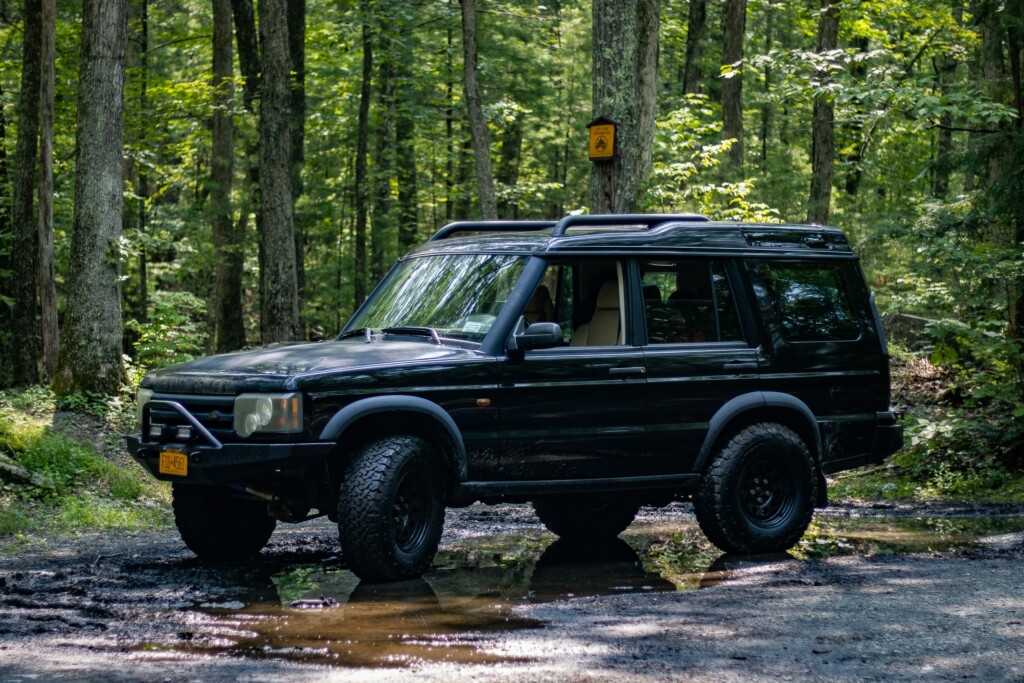
What is overlanding?
As an introduction to overlanding, it’s an off-road sport in which participants drive four-wheel-drive vehicles long distances over rugged terrain. It’s not a race but an adventure, and overlapping vehicles embody this mindset.
To understand the sport or activity of overlanding, you have to have an appreciation for the journey. In fact, it’s often said that overlanding is about the journey, not the destination. Originally an Australian term, “overlanding” was used to describe cattle driving across the Australian outback on horseback. Things have changed since then.
Wikipedia defines overlanding as:
“Self-reliant overland travel to remote destinations where the journey is the principal goal. Typically, but not exclusively, it is accomplished with mechanized off-road capable transport (from bicycles to trucks) where the principal form of lodging is camping, often lasting for extended lengths of time (months to years) and spanning international boundaries.”
But, what the heck does that mean? Essentially, typical overlanding is an off-road sport where the participant takes a four-wheel-drive vehicle (or sometimes a motorcycle, though this article won’t focus on them) across rough and rugged terrain, often in remote locations. Overlanding folks rely on their wits, capabilities, and preparation to conquer difficult obstacles or paths. It’s kind of a badass skill to have.
Again, the focus is on the journey, not the destination.
Along the way, most overlanders enjoy camping, camaraderie, and relaxing. It’s a sport that families can participate in together, and it’s really more about the activity than racing or winning. Depending on how seriously you take the sport, overlanding can be a leisurely stroll over semi-rough double-track trails or hardcore off-roading where you’re purposely stacking the odds against yourself to test your mettle.
What is overlanding terrain like?
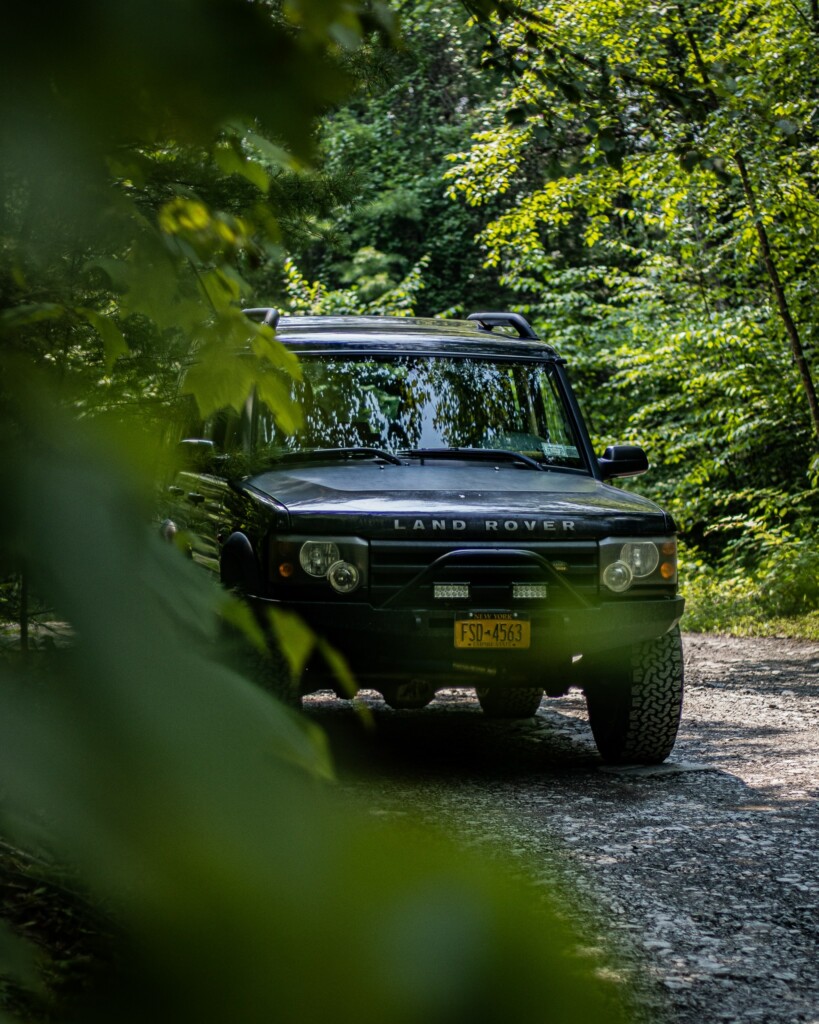
The answer to this has more to do with where you’re headed than a specific type of terrain suitable for overlanding. Here in New York, most “overlanding” is a link-up of double-track alpine forest trails. They’re mostly gravel and frequently pass over state roads. But they’re not terrible beginner overland trails.
But, in rugged states like Colorado, overlanders will ford rivers, crawl over rock outcroppings, navigate tight switchbacks, and climb mountains. In Texas, it’s rough desert terrain and dusty trails for the Lone Star state’s overlanding enthusiasts.
Overlanding for Beginners Key: Plan ahead
Before you plan your trip, be sure to check the type of terrain of the trail system you’re headed to. Some trails might be incredibly remote, requiring you to bring more supplies than those that cross roads or run through towns and villages. Others might be rocky, meaning you might need to air-down your tires for the journey. That also means you’ll need a way to air them back up when you’re hitting the open road.
I’ll discuss some overlanding websites and gear that might spark your interest later in this article.
Overlanding for Beginners: What is an overlander? The Best Vehicles

Before we go much further, it’s probably helpful to spend a few paragraphs focusing on some of the best vehicles for overlanding. Keep in mind that this list is not exhaustive, but these are wildly popular vehicles among the off-road overlanding crowd. They blend capability with reliability (in most cases), offering tough, dependable trail-tracking transportation.
As a note, these will just be overviews of each vehicle, pointing out some strengths and weaknesses. There will be follow-up articles on many of these vehicles in the future.
Best Overall Overlanding for Beginners Vehicle: Toyota Land Cruiser/Lexus LX470
The Toyota Land Cruiser/Lexus LX470 is arguably one of the most reliable vehicles ever made. Models over 20 years old still sell for between $15,000 and $25,000. They’re very capable of road. Almost any model year will excel in dependability and capability, but older models might suffer a bit from the rust that plagues the 1980s and 1990s Toyotas.
Overlanding for Beginners Fan Favorite: Jeep Wrangler
While the Wrangler and CJ might be the undisputed kings of rock crawling, they also do quite well when it comes to overlanding. In fact, this is one off-road sport where the bit of extra space offered by the four-door models comes in handy (it’s usually seen as a hindrance to the rock crawling crowd). These SUVs are incredibly capable off-road and the aftermarket support is absolutely endless.
Overlanding for Beginners Coolest Rig: Toyota FJ Cruiser
Very few vehicles less than 10 years old hold demand as much money on the used market as they did when new, but the FJ Cruiser does. This throwback to the Land Cruisers of old is a badass, off-road-focused rig, with a ton of ground clearance, a short wheelbase, and a high vantage point. If you can afford one of these beasts, you’ll be purchasing Toyota-dependability and serious off-road prowess.
Best Luxury Overlanding for Beginners Rig: Ford Expedition
When it comes to off-road motorsport, over-sized third-row SUVs typically reserved for soccer moms and Target grocery pickup probably don’t come to mind. But, make no mistake about the Ford Expedition; it is, and always has been, a durable monster of a truck. Overlanders love them because they offer massive payloads, plenty of space, and Ford Powerstroke diesel reliability and economy.
Most Reliable Overlanding for Beginners Rig: Toyota Tacoma/4Runner
Do you see a trend yet? Toyota’s off-road chops are real. When it comes to getting all four tires off the road, the Tacoma or 4 Runner (and the FJ Cruiser, as it’s built on the same chassis) have it takes. These midsize trucks and SUVs offer lots of ground clearance, Toyota reliability, and an endless supply of aftermarket parts.
The Overlanding for Beginners Purist: Land Rover Discovery
Two words: Camel Trophy. The Land Rover Discovery’s legendary off-road capability was a staple of the 1990’s “Olympics of off-roading.” These trucks’ ability to traverse just about anything quickly made them a favorite of off-roaders. While some models might suffer from reliability issues, well-maintained Discovery 1s and 2s still crush it off the beaten path.
Overlanding for Beginners Honorable Mention: Land Rover LR3
By the mid-2000s, Land Rover was already starting to soften up their vehicle lineup, offering SUVs that didn’t feel quite so sporty. But the LR3 held on to its Discovery roots, offering serious off-road gear and features. And, it did away with quite a few of the reliability issues that concerned many Discovery II owners. It also had lots of room inside, and every model came with third-row seats, making it one of the most family-friendly overlanders available.
Overlanding for Beginners Honorable Mention: Nissan Xterra/Frontier
The Xterra and the Frontier shared the same chassis, and they were both burly mid-size off-roaders. Coupling powerful engines with plenty of ground clearance and decent reliability, they became a somewhat more affordable option compared to the Toyotas. They also have pretty decent aftermarket support.
Overlanding for Beginners Honorable Mention: Subaru Outback
When it comes to kicking ass and sipping gas, it’s hard to beat a Subaru Outback. These off-road monsters are a meet-in-the-middle between car sportiness and SUV capability. With Subaru’s renowned reliability and all-wheel-drive, they’re actually quite handy off-road. And, given that they have much smaller engines and some semblance of aerodynamics, they’re much easier on gas than any other overlander on this list.
Other vehicles
There’s a “run-what-ya-brung” attitude to overlanding. Basically, if you have a reliable four-wheel-drive vehicle, it might be a very capable overlander. Full-size pickups, luxury SUVs, tiny off-roaders, and even some vans have hit the trail with great success.
Overlanding for Beginners: The Gear
As long as you stay within your vehicle’s limits, there aren’t many things you need to purchase to get into overlanding. But, upgrades and extras do make the sport more fun and interesting, so here are some items you might want to consider adding to your overlander.
Overlanding for Beginners: Overlanding Must Haves

These are the necessary items to add to your kit for an overlanding adventure:
- First aid kit: There’s a good chance your overlanding journey will take you well off the beaten path. Grab a full first-aid kit with a tourniquet, splints, bandages, and more.
- Water: If you’re not bringing plenty of water on your overlanding trip, you’re going to have a bad time. Overlanding gets hot, and dehydration leads to deliriousness. Deliriousness can cause disorientation on the trail. That’s a dangerous situation.
- Food: Make sure you have enough food. Whether it’s a weekend jaunt, a weeklong trail ride, or a few miles of dirt fire roads. If things get hairy off-road, being hangry can make it worse.
- Spare tire and jack: No, not the one under your t-shirts, boys. Flats happen off-road all the time. Having a spare tire and jack will allow you to fix your rig and get back on the trail.
- Shelter: You might have to leave your vehicle on the trail. Bringing portable shelter allows you to hike it out but stay safe overnight. If it’s all too much for you, you can try camping without a tent.
- Proper clothing: Dress for the current weather but pack for anything possible. As elevations change or the sun goes down, temperatures plummet. While you’re comfortable in a t-shirt at the foot of the mountain, you might develop hypothermia at the top.
- Maps: Don’t go off-roading somewhere you’ve never been without a map. That’s just foolish. Purple Lizard Maps and onX Off-Road are some of the best in the business.
- Fuel: There’s no telling how much extra fuel you’ll need. Many overlanders take jerry cans full of fuel to top off their rigs while they’re out on the road.
- Tools: Bringing a basic set of mechanic’s tools is always, always a necessity.
- Toilet paper: It beats wiping your ass with a pine cone.
Overlanding for Beginners: The Nice-to-Haves

There are some items that do make overlanding a bit more enjoyable. Plus, who doesn’t want to be the best equipped when the wagons circle for an overnight trip?
- Suspension lift: Some extra ground clearance goes a long way off-road. You’ll be able to climb steeper inclines, traverse water, and crawl over rocks much easier.
- Off-road tires: The type of tire you outfit your overlander with can make a huge difference in how well it handles off-road. A set of off-road or mud tires will provide some extra capability on the trail.
- Shelter: This is where a lot of overlanders start getting really excited about their gear. A roof-top, truck bed, or SUV tent allows an overlanding enthusiast to set up shop anywhere their vehicle will go. Some even build or buy off-road camping trailers for even more sleeping area.
- Communication: Depending on where you’re heading, there might not be any cell phone service at all. In that case, handheld radios or a sat phone can keep you in touch with help if something happens.
- GPS: If you get off the beaten path, there’s a good chance your vehicle’s GPS won’t do diddly squat. Equipping your kit with a quality off-road GPS is an excellent idea.
- Lighting: If you’re heading on an overnight trip, you might want to consider adding some extra light to your vehicle. Not only will you be able to see better, but extra light will also allow you to take in more of nature when it gets dark. And, if your buddy needs to make a repair at camp that night, your lights will come in handy.
- Grill: It’s hard to beat steaks, burgers, and dogs after a long haul, so equipping your rig with a grill is always a smart move.
Best Overlanding for Beginners Websites
If you’re looking for more information on overlanding, there are plenty of great online resources you can check out. Here are just a few of the best websites for overlanding information, parts, tip-planning, and more.
Expedition Portal
Expedition Portal is an overlander’s website made in heaven. This site features classifieds, forums, a podcast, and more.
TrailBuilt Off-Road
If you’re looking for parts, gear, or just generally cool information on overlanding, TrailBuilt Off-Road is a great start. It’s off-road specific, and there are parts for a variety of vehicles.
Exploring Overland
Exploring Overland is an excellent resource for enthusiasts of the great outdoors who also enjoy tech and off-roading. With tips, advice, stories, and product reviews available, it’s an awesome first stop on your overlanding journey.
Lifestyle Overland
If you really want to get a taste of how family-friendly and fun overlanding can be, check out Lifestyle Overland. This blog covers travels through different trail systems, vehicle build sheets, real trailside stories, and plenty of embedded YouTube videos for you visual learners out there.
OutdoorX4
OutdoorX4 is a magazine focusing on getting outdoors and off-road. While traditionally a print magazine, older issues are available for online perusal, and they’re chuck full of awesome pictures, reader’s rides, stories, and articles.
XOverland
XOverland is an awesome way for beginners to see how hardcore overlanders get down. This site features lots of videos, a blog, and vehicle build information made by adventure travelers hitting some of the world’s most remote areas.
OverlandExpo
OverlandExpo is a wealth of information for would-be overlanding enthusiasts. From the site’s Compass Blog to resources on finding trails and press releases on new products, it’s certainly worth spending some time digging into this site.
Overland Journal
Overland Journal is like the gentleman’s magazine for overlanding. With print magazines, an online journal, and really impressive photography, you can get lost in this resource of overlanding information.
Atlantic British
Owning an off-road Land Rover is an on-going lesson in vehicle maintenance. Having a site like Atlantic British on your side means you’ll always have access to the parts or maintenance items you need, keeping your off-road monster in tip-top shape.
4WheelParts
For just about anything off-road-related, 4WheelParts is a great place to start. This site has parts for a variety of off-road models, and it carries tires, off-road bumpers, wheels, and lifts, and it features an entire section for overlanding.
Should I try overlanding?

You might be wondering if you should try overlanding. The answer depends on the type of person you are. If you love camping, being outdoors, and removing yourself from the hustle and bustle of everyday life, you might really enjoy overlanding. If you already have a four-wheel-drive vehicle, the best way to find out is to just give it a shot.
My suggestion would be to hit a short trail nearby and see how you like navigating trails. Once you’re comfortable, an overnight stay might be a good idea to test the waters. After that, the sky’s the limit.
Your Turn
What do you think about overlanding? For those of you out there that are old pros, what’d I miss? Is there some essential gear that you’d add? Is there a website you’ve found to be invaluable? Let me know below in the comments below. Keep your eyes peeled for more posts. In fact, subscribe to the email notifications so you don’t miss any of this damn good content.
Overlanding for Beginners FAQs
What do you need to start overlanding?
The number one thing you need to start overlanding is a reliable 4×4 vehicle. It doesn’t need to have burly tires or a massive lift kit in the beginning. You’ll want to start on easier trails anyway, so a basic four-wheel-drive vehicle that won’t break down in the middle of the trail is key. Beyond that, refer to the list of Necessities and Nice-to-Haves listed in this article.
What is the best vehicle for overlanding?
In my opinion, there are two vehicles that take the cake: The Toyota Landcruiser and the Land Rover Defender. Both are pretty cost-prohibitive, so I chose a Land Rover Discovery II for my overlanding rig. Other outstanding vehicles include the Toyota 4Runner, FJ Cruiser, Sequoia, Tacoma, or Tundra, as well as the Ford Expedition and Jeep Wrangler.
Do you need 4×4 for overlanding?
Opinions vary on this topic. It’s possible to enjoy light-duty trails in a 2WD van, truck, or SUV, so 4×4 isn’t an absolute necessity. However, to take your overlanding adventures as far as possible, four-wheel-drive is definitely a help.
